Select Language
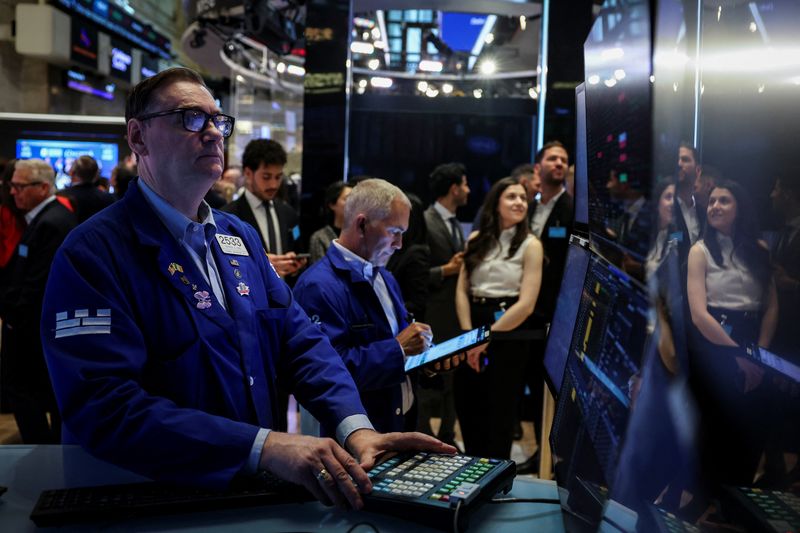
U.S. stock futures steady after equities slump in the prior session, with traders attempting to gauge mixed artificial intelligence-related headlines and a murky economic backdrop. Uncertainty over the economy and an extended U.S. government shuttering helps to fuel a spike in gold prices above the $4,000 per ounce level for the first time. The Federal Reserve is due to release minutes from its latest policy meeting, while AI-darling Nvidia is reported to be among a group of investors in xAI’s $20 billion capital raising round.
1. Futures point higher
U.S. stock futures hovered above the flatline on Wednesday, as investors assessed fresh worries over the AI boom and kept tabs on the broader economic outlook despite a lack of official data during an ongoing federal government shutdown.
By 03:48 ET (07:48 GMT), S&P 500 futures had climbed by 8 points, or 0.1%, Nasdaq 100 futures had edged up by 38 points, or 0.2%, and Dow futures had risen by 60 points, or 0.1%.
On Tuesday, equities on Wall Street retreated from recent record highs, with the benchmark S&P 500 falling by 0.4% and the tech-heavy Nasdaq Composite declining by 0.7%. The blue-chip Dow Jones Industrial Average also dipped by 0.2%.
Partly fueling these drops was a slump in shares of cloud software group Oracle, which had surged just last month on hopes that it would be a major winner in the AI race. Analysts flagged a news report in The Information, which suggested that the margin profile of Oracle’s AI cloud infrastructure business, which has been pressurized by heavy expenditures on the nascent technology, was worse than previously thought.
Still, the narrative around AI, perhaps the biggest supporter of the torrid run higher for stocks, remained intact. Shares in AMD, which announced a deal with ChatGPT-maker OpenAI earlier this week, extended a rise into a second day, while IBM advanced on a partnership with AI-name Anthropic and AI server firm Dell rallied on a raised long-term guidance.
With the prolonged shutdown leading to the delay of several key economic indicators from the government, traders have had to turn to alternative data sources to check in on the health of the American economy. These measures dented sentiment in the previous session, especially a New York Federal Reserve survey displaying a deterioration in future expectations and rising projections for inflation.
2. Gold tops $4,000 per ounce
Gold prices have soared above $4,000 per ounce for the first time, as market participants like private investors and central banks moved to take advantage of the safe-haven status of the yellow metal during a time of political upheaval and economic uncertainty.
Bullion has surged by over 50% so far this year, posting a series of fresh all-time peaks along the way. It is now on track to jump to its best year since 1979.
Analysts have noted that the U.S. government shutdown, combined with a weakening of other popular havens such as the dollar and U.S. government bonds due to anticipated Fed rate cuts and concerns over America’s fiscal profile, have burnished gold.
The Japanese yen, also a traditional haven, took a knock as well following the election of a new, more dovish leader of the ruling Liberal Democratic Party. The global political landscape was even made more unclear after the surprise resignation of France’s Prime Minister on Monday, giving additional support to gold.
Meanwhile, many exchange-traded funds have been expanding their holdings of gold as anticipation of Fed rate reductions intensifies, analysts at ING said in a note. Some central banks are also snapping up the precious metal, with the People’s Bank of China in particular extending its gold buying streak in September for an eleventh straight month despite record high prices.
3. FOMC minutes ahead
Attention is now set to turn to the release of minutes on Wednesday from the Fed’s latest policy meeting in September.
At the gathering, Fed members voted to slash interest rates by a quarter of a percentage point, restarting a cycle of policy easing that had been put on hold since December.
Officials broadly predicted that further rate cuts may be coming at the central bank’s final two meetings of the year, one later this month from October 28-29 and another in December.
Underpinning these projections was a perceived desire to prioritize bolstering a recently slowing U.S. labor market over stubborn inflation. In theory, rate reductions can promote hiring and investment, albeit at the risk of driving up prices.
"The Fed minutes in aggregate should echo the incrementally dovish shift in bias" from the Fed’s September statement and a press conference from Chair Jerome Powell, analysts at Vital Knowledge said. "[B]ut they will probably reflect deep divisions too, as some officials push for a fairly aggressive rate cutting campaign while others prefer to limit the easing to 1-2 reduction given persistent inflation challenges and an employment situation that remains decent on an absolute basis."
Elsewhere, a few Fed officials are scheduled to speak, although the lack of new economic data means that their comments are not likely to fundamentally alter rate path bets, the analysts added.
4. Nvidia among investors in xAI’s $20-billion capital raise - Bloomberg
Elon Musk-backed artificial intelligence startup xAI increased a planned capital raise to as much as $20 billion, including an investment from Nvidia to procure more AI processors, Bloomberg News reported.
The financing is largely aimed at procuring more Nvidia chips that xAI plans to use in its upcoming Colossus 2 data center in Memphis, the report said. The capital raise includes equity and debt.
Nvidia will invest as much as $2 billion in the equity portion of the deal, Bloomberg reported. The move is largely part of Nvidia’s strategy to help accelerate its customers’ AI investments, with the chipmaker having pledged about $100 billion to OpenAI last week -- although some observers have become increasingly concerned that the circular nature of these deals may belie the robustness of the AI boom.
Previous reports said xAI was aiming to raise around $10 billion in its ongoing funding round. Other reports also valued xAI at $200 billion in September, making it among the most valuable startups in the world, behind OpenAI.
5. ABB to sell robotics unit to Japan’s SoftBank
Swiss engineering giant ABB on Wednesday said it agreed to sell its robotics unit to SoftBank Group Corp. for an enterprise value of $5.38 billion, dropping its initial plan to spin off the business.
The deal will generate cash proceeds of roughly $5.3 billion, ABB said in a statement, and is expected to close in mid-to-late 2026.
ABB said the proceeds of the deal will be used towards its “long-term capital allocation principles,” which will include investing in acquisitions, organic growth, and potential returns to shareholders.
SoftBank CEO Masayoshi Son said in a statement that the acquisition was aimed at furthering the Japanese conglomerate’s ambitions of “physical AI,” in that the firm will meld its robotics and artificial intelligence capabilities. SoftBank, under Son, has aggressively invested in AI and AI-linked sectors over the past two years.
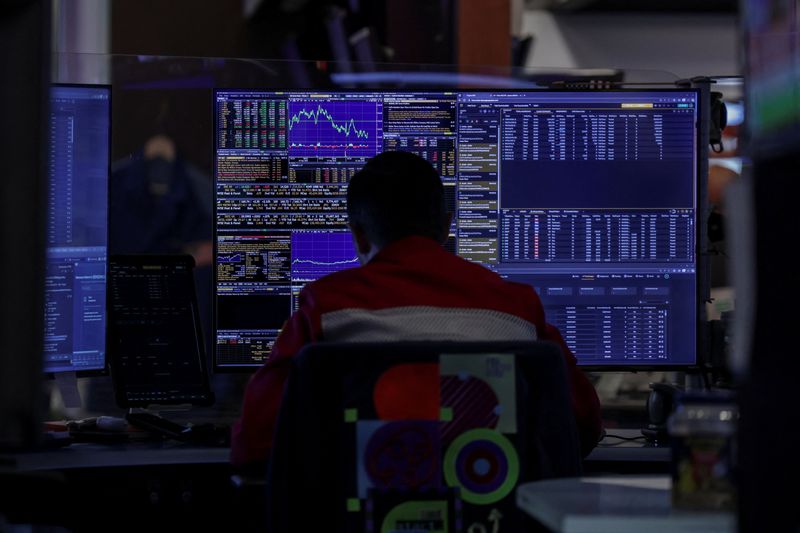
U.S. equity funds saw robust inflows in the week to October 1 on renewed bets of rate cuts, as an inflation report eased worries that a buildup in prices would push the Federal Reserve to delay policy support for a weakening labor market.
Investors bought a net $36.41 billion worth of U.S. equity funds during the week in their largest weekly net purchase since November 13, 2024, LSEG Lipper data showed.
The large-cap funds segment stood out as it drew a net of $40.75 billion in weekly inflows, the largest amount since at least 2022.
Small-cap and mid-cap funds, however, witnessed outflows to the tune of $2.59 billion and $2.28 billion, respectively.
Among sectoral funds, investors scooped up tech sector funds of net $3.04 billion after two weeks of net sales. They also added funds of $652 million and $497 million in the industrial and communication services sectors, respectively.
Investors, meanwhile, ditched a net $1.58 billion worth of bond funds, halting their 23-week-long trend of net purchases.
They divested U.S. short-to-intermediate government and treasury funds of a net $9.37 billion in their largest weekly sales since at least January 2022.
At the same time, U.S. short-to-intermediate investment-grade funds and general domestic taxable fixed-income funds gained net inflows of $1.95 billion and $1.55 billion, respectively.
Weekly net investments in money market funds, meanwhile, jumped to a four-week high of $47.08 billion during the week.
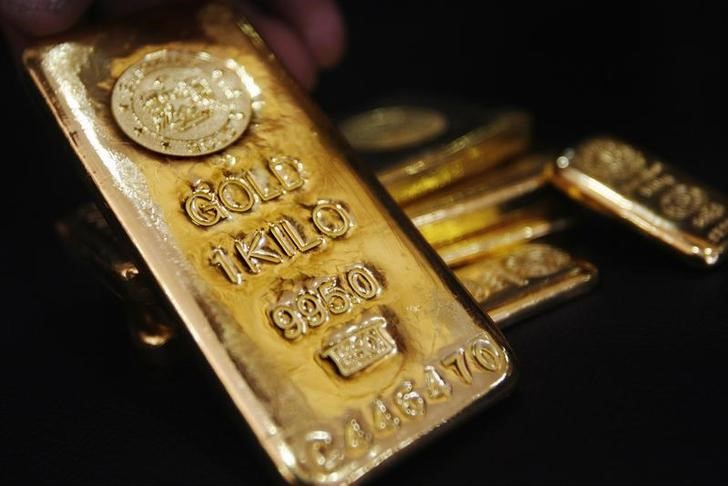
Goldman Sachs said on Wednesday that the upside risks to its $4,000 per ounce mid-2026 gold forecast have grown, highlighting two factors that could push prices beyond that level.
Gold has rallied 14% since late August to around $3,865, leaving it up 47% year-to-date. The breakout reflects renewed buying from exchange-traded funds (ETFs), central banks, and, to a lesser extent, speculative investors.
The first catalyst that could push the bullion above the $4,000 threshold is the limited role of speculative positioning in the recent rally, Goldman analyst Daan Struyven said.
Struyven argues that speculation “explains only a modest 1pp of the 14% rally since August 26, and has not increased over the last three weeks.” That suggests the surge has come from more stable long-term buyers, leaving scope for additional price gains if speculative flows eventually pick up.
The second factor is the strong surprise in Western ETF demand. Holdings rose by 109 tonnes in September, far above Goldman’s model prediction of 17 tonnes based on falling U.S. interest rates.
Struyven said this shows that the “key upside risk” it has been flagging—private investors diversifying more significantly into gold—“seems to be realizing for now.”
Because gold ETFs remain small compared with developed-market bond markets, even a minor shift in allocations away from fixed income could drive a large further increase in gold prices, the analyst added.
Goldman reiterated that gold is its “highest-conviction long commodity recommendation,” citing structurally higher central bank demand, upside risks from private sector diversification, and attractive hedging properties in market downturns.
The analysts see additional support in scenarios of global growth slowdowns or rising concerns about developed-market macro policy.

Gold prices hit a record high in Asian trade on Wednesday as the U.S. government began shutting down after Congress failed to approve fresh federal funding.
Spot gold hit a record high of $2,875.53 an ounce, while gold futures for December hit a peak of $3,903.45/oz. Spot prices traded slightly below the record, at $3,862.22 by 00:22 ET (04:22 GMT).
US government begins shutting down amid Congress deadlock over spending
A shutdown took effect from midnight, Tuesday (0400 GMT Wednesday) after an eleventh-hour spending bill backed by the Republican party failed to clear a Senate vote, amid persistent resistance from the Democrats.
The yellow metal hit a series of record highs this week amid increasing signs of U.S. political deadlock, which weighed on the dollar and kept traders biased towards safe havens.
Other precious metal prices also clocked hefty gains this week as safe haven demand spilled over from gold, with platinum and silver prices hitting 12 and 14-year highs, respectively.
Spot silver rose 0.9% to $47.0525/oz on Wednesday, while spot platinum fell 0.3% to $1,572.18/oz.
Industrial metals were also sitting on sharp gains this week, but saw some declines on Wednesday. Benchmark copper futures on the London Metal Exchange fell 0.1% to $10,278.10 a ton, while COMEX copper futures fell 0.7% to $4.8450.
Nonfarm payrolls data likely delayed
A U.S. government shutdown is expected to delay a hotly anticipated labor market reading due this week. A prolonged shutdown is also expected to disrupt future U.S. data releases.
Nonfarm payrolls data for September was scheduled to be released on Friday, but may now be delayed due to disruptions in federal agencies.
The print is expected to provide more definitive cues on the labor market– whose cooling was a major motivator of the Federal Reserve’s September rate cut.
Doubts over more rate cuts also crept into markets this week, following a slew of hawkish comments from Fed officials.
Dallas Fed President Lorie Logan flagged heightened caution over future interest rate cuts, stating that the labor market will need to deteriorate further for the central bank to consider more rate cuts.

A note of caution took hold of world markets on Tuesday, with the dollar and equities slipping and gold briefly hitting new record highs on concern a U.S. government shutdown could delay key jobs data.
The dollar was broadly weaker, European stocks dipped and U.S. equity futures pointed to a weak open on Wall Street as Washington braced for a fast-approaching government shutdown as Republicans and Democrats appeared unlikely to reach an agreement that would extend funding past a midnight deadline.
A government closure would delay the issue of Friday’s key employment numbers, putting the spotlight on the Labor Department’s JOLTS report on August job openings due later on Tuesday. It could also complicate the outlook for the Federal Reserve, which cut rates earlier this month.
SHUTDOWN COULD LEAVE FED WITHOUT KEY DATA
"We are seeing a bit of concern about how the next few days play out, it seems like both sides are accepting that a shutdown is inevitable," said James Rossiter, head of global macro strategy at TD Securities in London.
"The worry here is that if there is a shutdown, it could be long and if we don’t get Friday’s jobs report or the next CPI number, where does the Fed sit?" he said, referring to U.S. inflation data.
The pan-European STOXX 600 index was last down around 0.1%, while Japan’s Nikkei closed down 0.25%. MSCI’s broadest index of Asia-Pacific shares outside Japan, however, rose almost 0.5%, poised for a gain of over 5% this month.
China’s blue-chip CSI300 Index also rose almost 0.5%, set for a fifth straight month of gains in its longest such streak since October 2017.
With U.S. stocks looking set to end September more than 3% higher and European shares up almost 1% this month, overall sentiment towards equities remained upbeat.
"We’ve actually just decided to increase our weightings in equities further," said Shaniel Ramjee, co-head of multi-asset at Pictet Asset Management.
"The earnings picture has recovered quite materially at the same time that global central banks are still cutting interest rates and global growth is fine."
Australia’s dollar added to gains after the central bank held policy rates unchanged, as widely expected, and oil prices fell over 1% on prospects for greater production by OPEC+, while China’s manufacturing activity shrank for a sixth month in September.
A STELLAR MONTH FOR GOLD
U.S. shutdown worries added to gold’s stunning rally. The precious metal briefly hit a new record high of $3,820 per ounce before trading lower on the day. Still, it has gained over 10% in September - on track for its biggest monthly percentage gain since July 2020.
Without a deal, a U.S. government shutdown would begin from Wednesday, the same day new U.S. tariffs are set to take effect on heavy trucks, patented drugs and other items.
The White House announced revised tariffs on furniture and cabinets late on Monday that are due to kick in on October 14.
All this left the dollar on the defensive.
The U.S. currency was down 0.4% at 147.98 yen, the euro was up 0.1% at $1.1742, while the Swiss franc and pound were also a touch firmer against the dollar.
The dollar index was last down 0.1% on the day and set to end September little changed on the month.
The yen could emerge as an outperformer as a hedge to a U.S. government shutdown, ING currency analysts said in a note.
The U.S. JOLTS report is the first of several indicators expected ahead of the September employment report due Friday that is considered key to the Fed’s calculations for the timing of rate cuts.
A protracted government closure could leave the Fed flying blind on the economy when it meets on October 29, however.
Analysts expect JOLTS to show job openings held firm at about 7.18 million in August.
Data released on Tuesday showed China’s purchasing managers’ index rose to 49.8 in September from 49.4 in August, below the 50-mark separating growth from contraction.
It suggested producers are waiting for further stimulus to boost domestic demand, as well as clarity on a U.S. trade deal.
Elsewhere, the Reserve Bank of Australia left its cash rate steady at 3.60%, saying recent data suggested inflation might be higher than forecast in the third quarter and that the economic outlook remained uncertain.
In Europe, data showing inflation rising in four key German states had limited market impact.
Oil stayed weaker due to an anticipated production increase by OPEC+ and the resumption of oil exports from Iraq’s Kurdistan region. Brent slipped 1.25% to $67.11 per barrel and U.S. crude fell 1.25 % to $62.66.
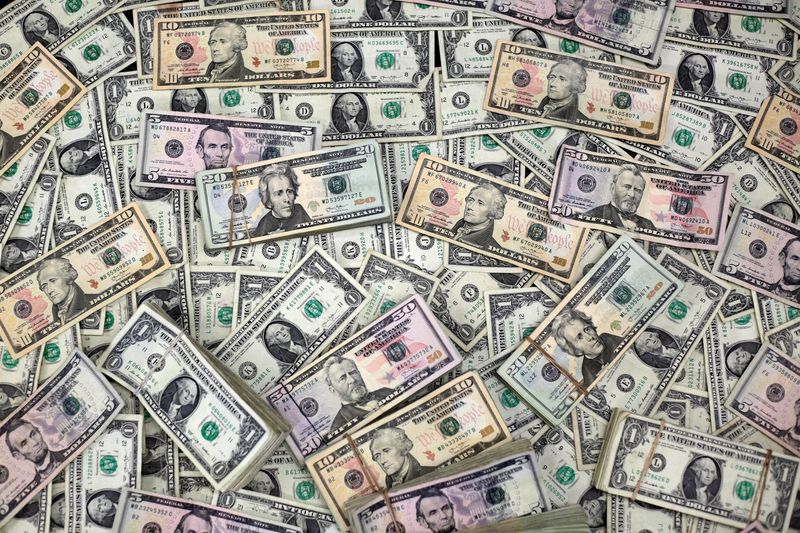
The U.S. dollar weakened on Monday, as investors eyed the prospect of a federal government shutdown as well as a slate of fresh U.S. economic data points this week.
By 05:35 ET (09:35 GMT), the U.S. dollar index, which tracks the greenback against a basket of currency peers, had fallen by 0.2% to 97.92.
Attention is turning to the unveiling of September’s nonfarm payrolls report on Friday, which could provide a glimpse into the state of the American labor market.
Supporting a cooling jobs picture has been a major focus for Federal Reserve policymakers. When the central bank slashed interest rates by 25 basis points earlier this month, officials widely suggested that a need to prioritize the slowing employment situation over signs of sticky inflation.
A collection of rate projections from the Fed also showed that many members are anticipating further drawdowns before the end of the year. In theory, cutting rates can spur on investment and hiring, albeit at the risk of driving up prices.
Economists are anticipating that the U.S. added 51,000 roles this month, compared to 22,000 in August. The unemployment rate, meanwhile, is tipped to equal August’s level of 4.3%.
Observers have predicted that, given elevated inflation data, a strong jobs report could persuade the Fed to roll out further rate cuts at a more measured pace.
Traders are currently pricing in roughly 40 basis points of Fed easing by the end of 2025, around 25 basis points below the level seen earlier this month. This slight pullback in expectations for Fed rate cuts, helped give lift to the dollar last week.
"A jobs number [less than] 75,000 will probably keep the Fed on track for a [...] cut [at its next meeting on October 29], but something [greater than] 115K with the core PCE just below 3% could spur" Fed Chair Jerome Powell and his colleagues to skip a reduction at the gathering, analysts at Vital Knowledge said in a note.
Yet worries remain that a possible U.S. government shutdown this week may delay the publication of the jobs numbers.
Congressional lawmakers are currently facing an impending deadline to pass a stopgap funding bill before the fiscal year ends on Tuesday. If the federal government would enter its 15th partial shuttering since 1981.
Republicans currently control both chambers of Congress, although the votes of some opposition Democrats would be needed to pass the legislation. However, Democrats have so far rejected a short-term bill, calling for any potential bill to reverse Republican reductions to health care programs.
Leaders from both parties in Congress are due to meet with President Donald Trump -- a Republican -- at the White House on Monday to discuss the matter. Speaking to Reuters over the weekend, Trump said he has "the impression" that Democrats may want to reach an agreement.
Elsewhere, analysts are keeping tabs on a legal battle over the possible dismissal of Fed Governor Lisa Cook by the Trump administration, which have exacerbated concerns over the independence of the central bank.
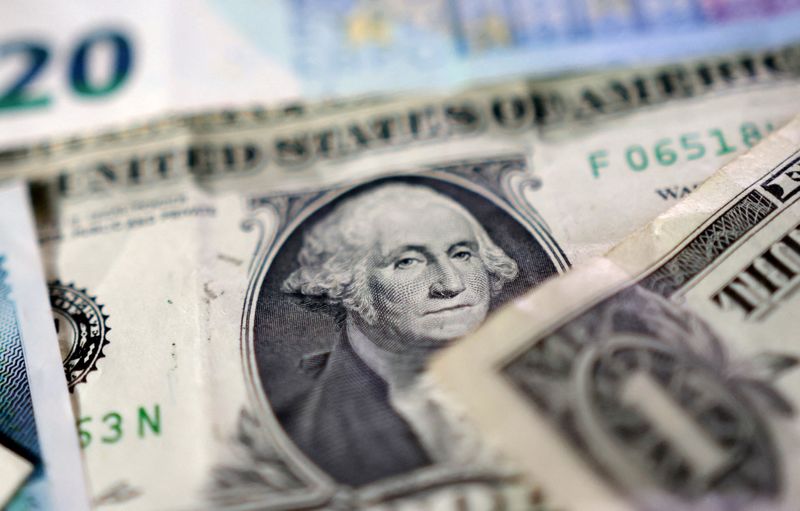
MUMBAI/TOKYO (Reuters) -The dollar was steady against the euro and sterling on Friday, holding on to steep gains as investors awaited U.S. consumer spending data after better-than-expected growth numbers dampened expectations of further easing by the Federal Reserve this year.
The euro was hovering near a three-week low at $1.1667 while sterling was flat at $1.3351 after touching a near two-month trough on Thursday.
The yen traded at an eight-week low following a new raft of tariffs announced by U.S. President Donald Trump which included a 100% levy on branded drugs, 25% on heavy-duty trucks, and 50% on kitchen cabinets.
MUTED CURRENCY REACTION DUE TO EXEMPTION HOPES
Shares in Europe’s biggest pharma companies were steady after an early dip, with analysts pointing out that exemptions for firms that set up manufacturing facilities in the U.S. meant that regional giants such as Roche and Novo Nordisk are likely to see a muted impact.
"It’s not surprising to see the muted reaction in currencies as markets have been through multiple rounds of this already and are inclined to see the announcements more as a negotiating position being set up by the White House," said Nick Rees, head of macro research at Monex Europe.
Also, the bilateral trade deals that various countries have struck with the Trump administration have not been as disruptive as initially feared, and this has further assuaged markets’ sensitivity, he said.
The dollar index, which measures the greenback against major currencies, was poised for its biggest weekly advance in two months after figures on U.S. economic growth, unemployment claims, durable goods and wholesale inventories all beat expectations on Thursday.
FED RATE CUT BETS TRIMMED
Attention now turns to the release of U.S. consumer spending and PCE inflation data later on Friday for further signals on how urgently the economy needs additional rate cuts from the Fed.
Markets are now pricing in about a 14.5% chance of the Fed keeping rates unchanged next month, up slightly from 8.1% a day earlier, according to the CME FedWatch Tool. The cumulative policy easing priced in by the end of the year has also dipped below 40 basis points.
The Commerce Department reported on Thursday that U.S. gross domestic product rose by an upwardly revised rate of 3.8% from April through June, higher than the 3.3% initially reported. Economists polled by Reuters did not expect the rate to be revised.
Friday’s personal consumption expenditures (PCE) price index, the Fed’s preferred inflation measure, is expected to show a 0.3% month-on-month increase for August and a 2.7% year-on-year rise, according to a Reuters poll.
"We think more good news is needed to keep the dollar going, and we see substantial risks of a correction today after a USD rally that looks slightly overdone," Francesco Pesole, FX strategist at ING said in a note.
While the euro could rise above $1.17 in the near term, a rise in market sensitivity to geopolitical tension in Europe alongside continued strength in U.S. economic data presents a risk, the note said.
Elsewhere, data showed that core inflation in September for Tokyo stayed well above the Bank of Japan’s central 2% target, keeping alive expectations of a near-term interest rate hike.

Gold prices held largely steady in Asian trade on Thursday after sliding from record highs, as a stronger dollar and cautious Federal Reserve signals weighed on the metal’s appeal.
Spot gold was last up 0.2% at $3,713.42 an ounce by 03:01 ET (07:01 GMT), after retreating from Tuesday’s all-time peak of $3,790.82/oz. U.S. Gold Futures for December edged up 0.1% to $3,773.02.
The yellow metal settled 0.7% lower on Wednesday as the dollar rebounded overnight, making gold more expensive for buyers using other currencies.
Gold slips from near record levels ahead of key US data
Fed Chair Jerome Powell said on Tuesday there was “no risk-free path” for policy, warning of the risks of cutting too quickly or too slowly.
San Francisco Fed President Mary Daly and other officials echoed the cautious tone, underscoring that easing would hinge on incoming data.
Investors are awaiting a string of U.S. economic reports this week, expected to provide clearer signals on whether the central bank will move ahead with further rate cuts this year.
Lower interest rates reduce the opportunity cost of holding non-yielding assets such as bullion, making gold more attractive to investors.
Weekly jobless claims due later on Thursday are expected to come in around 230,000. The government’s second estimate of second-quarter GDP will also be released on Thursday.
The August core Personal Consumption Expenditures (PCE) price index, due Friday, is expected to rise about 2.7% from a year earlier, remaining above the Fed’s 2% target.
Bullion has been constantly reaching fresh peaks, driven by expectations of monetary easing, geopolitical uncertainty and strong central bank purchases.
Other metal markets subdued
Other precious and industrial metals also traded in narrow ranges on Thursday amid broader caution.
Silver Futures edged 0.2% higher to $44.29 per ounce, while Platinum Futures were largely steady at $1,484.35/oz.
Benchmark Copper Futures on the London Metal Exchange slipped 0.5% to $10,313.65 a ton, while U.S. Copper Futures gained 0.4% to $4.85 a pound.
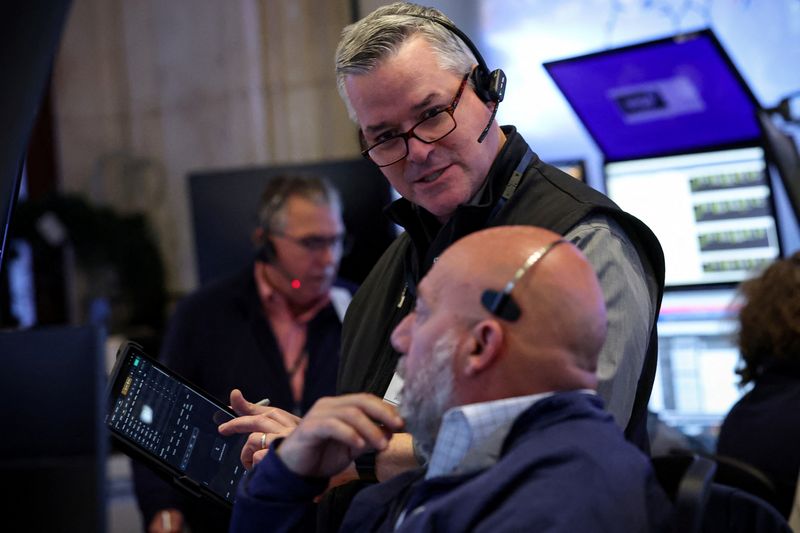
Futures for the S&P 500 and the Nasdaq edged higher on Wednesday as investors assessed cautious commentary from U.S. Federal Reserve Chair Jerome Powell and looked ahead to key economic data later in the week.
While the recent numbers point to a resilient economy, comments from Fed officials have injected some wariness, especially about the labor market. Powell added to the measured tone on Tuesday, noting that asset prices appeared fairly highly valued.
He stopped short of aligning with either camp in the ongoing debate among Fed policymakers, with some pushing for more aggressive cuts to support the jobs market while others urge restraint to avoid reigniting inflation.
Instead, the Fed chair emphasized the delicate balancing act the central bank is faced with to navigate inflation risks while addressing signs of a softening labor market.
At 5.30 a.m. ET, Dow e-minis rose 22 points, or 0.05%, U.S. S&P 500 E-minis gained 11.5 points, or 0.2%, and Nasdaq 100 E-minis added 78.5 points, or 0.3%.
A widely expected 25-basis-point cut last week helped propel equities, but investors are hoping for more easing this year to keep the momentum going.
"The bias is so heavily skewed towards ultra dovishness that any shortcomings in commentary can cause a wobble in sentiment," Daniela Sabin Hathorn, senior market analyst at online trading firm Capital.com, said in a note.
There has also been concern about inflated stock valuations in some sectors. Only 17% of stocks in the benchmark S&P 500 outperformed the index in the last three months, according to data from Charles Schwab, underscoring the narrow breadth powering the rally.
Investors will closely watch the core personal consumption expenditures data, the Fed’s preferred inflation gauge, due to be released later this week. A hotter-than-expected reading could strengthen the case for a more cautious pace of easing, while a softer print might reinforce bets on additional cuts.
Meanwhile, housing market data due on Wednesday could offer insight into consumer demand and builder sentiment, especially as elevated borrowing costs continue to weigh on affordability.
The sector has been pressured for much of the year and any signs of stabilization could influence broader sentiment.
Markets may also take cues from an upcoming speech by Federal Reserve Bank of San Francisco President Mary Daly, who could shed light on how regional Fed officials are interpreting the latest data and policy signals.
In stocks, Lithium Americas’ U.S.-listed shares surged 67% after Reuters reported President Donald Trump’s administration was weighing taking an up to 10% equity stake in the company.
Memory chipmaker Micron Technology’s shares also rose 1.3% before the open after it forecast quarterly revenue above estimates.
Equities have become increasingly central to household wealth, making market performance a key pillar of consumer confidence.
Household exposure to stocks rose to a record 65.8% in the second quarter, higher than their share at the peak of the dotcom bubble, according to Schwab.
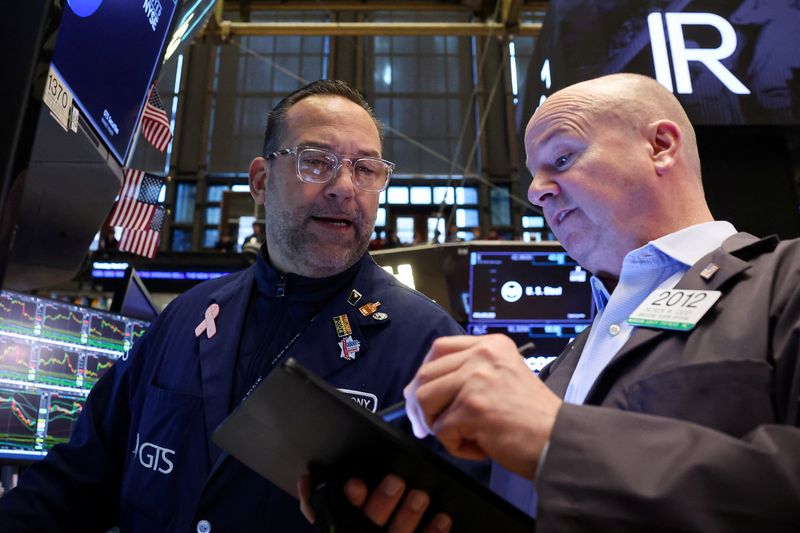
U.S. stock index futures traded in a subdued fashion Tuesday, consolidating after Wall Street clocked a three-day winning streak ahead of an eagerly-awaited speech by Federal Reserve Chair Jerome Powell.
At 05:55 ET (09:55 GMT), Dow Jones Futures gained 85 points, or 0.2%, S&P 500 Futures rose 1 points, or 0.1%, and Nasdaq 100 Futures climbed 9 points, or 0.1%.
The three benchmark indices closed at all-time highs — marking three consecutive winning sessions for the S&P 500 — and recorded fresh intraday records on Monday. This followed the announcement of a $100 billion investment by chip giant Nvidia (NASDAQ:NVDA) in ChatGPT-maker and client OpenAI to help build out data centers.
Powell speech, PMI prints in spotlight
Investors have turned more cautious ahead of a speech by Powell later in the session, with the Fed Chair likely to offer more insight into the central bank’s plans to cut interest rates.
The Fed cut rates by a largely telegraphed 25 basis points last week and flagged at least two more cuts this year, citing weakness in the labor market. But Powell warned that sticky inflation and resilience in jobs could raise questions over further easing.
A number of Fed members warned on Monday that the central bank’s recent cut diminished the need for further easing, but recently-confirmed Fed Governor Stephen Miran on Monday called for aggressive reductions.
Markets are now placing a roughly 90% chance of a quarter-point reduction in the Fed’s target rate from the current range of 4% to 4.25% at the central bank’s next meeting in October, according to CME’s closely-monitored FedWatch Tool. There is also about a 75% chance of another 25-basis point cut at the following gathering in December.
Aside from Fed speakers, attention will home in on flash U.S. business activity figures for September.
Economists have forecast that S&P Global’s composite purchasing managers index for the month will match August’s reading of 54.6. A level above 50 indicates expansion.
Manufacturing sector PMI is tipped to edge down to 52.2 from 53.0, while the gauge of the services industry -- which accounts for much of U.S. output -- is projected to inch lower to 54.0 from 54.5.
Micron set to report quarterly results
In the corporate sector, Micron (NASDAQ:MU) is expected to reveal its latest quarterly results after the closing bell, and is set to offer more insight into the trajectory of the AI boom.
Recent commentary around the maker of advanced memory and storage chips has been widely bullish, driven by hopes that soaring demand conditions and tighter supplies will support solid earnings and sales.
In August, Micron lifted its fiscal fourth-quarter revenue and adjusted profit forecast, citing an anticipated surge in returns from its memory chips used in AI infrastructure.
Elsewhere, Kenvue (NYSE:KVUE) stock soared premarket, rebounding after a record low the day before, even as U.S. President Donald Trump linked its Tylenol drug to autism risk during pregnancy at a White House press conference.
Firefly Aerospace (NASDAQ:FLY) stock slumped on the back of its financial results, the first to come out since the rocket maker’s Nasdaq debut in early August. It posted a wider loss and lower-than-expected revenue in its second quarter.
Crude bounces
Oil prices rose, bouncing from earlier losses after healthy activity data in Europe raised hopes of raised consumption in this important region.
At 05:55 ET, Brent futures gained 0.4% to $66.83 a barrel, and U.S. West Texas Intermediate crude futures rose 0.6% to $62.64 a barrel.
Eurozone business activity grew at its fastest pace in 16 months in September, as the HCOB Flash Eurozone Composite Purchasing Managers’ Index, compiled by S&P Global, edged up to 51.2 in September from 51.0 in August, marking the ninth consecutive month of growth.
That said, both benchmarks are currently suffering a five-session losing streak on concerns of global oversupply.
Iraq’s federal and Kurdish regional governments reached a deal with oil firms to resume crude exports via Turkey on Monday, Reuters reported, potentially allowing exports of about 230,000 barrels per day to resume, having been suspended since March 2023.
In its latest monthly report, the International Energy Agency said world oil supply will rise more rapidly this year and a surplus could expand in 2026 as OPEC+ members increase output and supply from outside the group grows.

